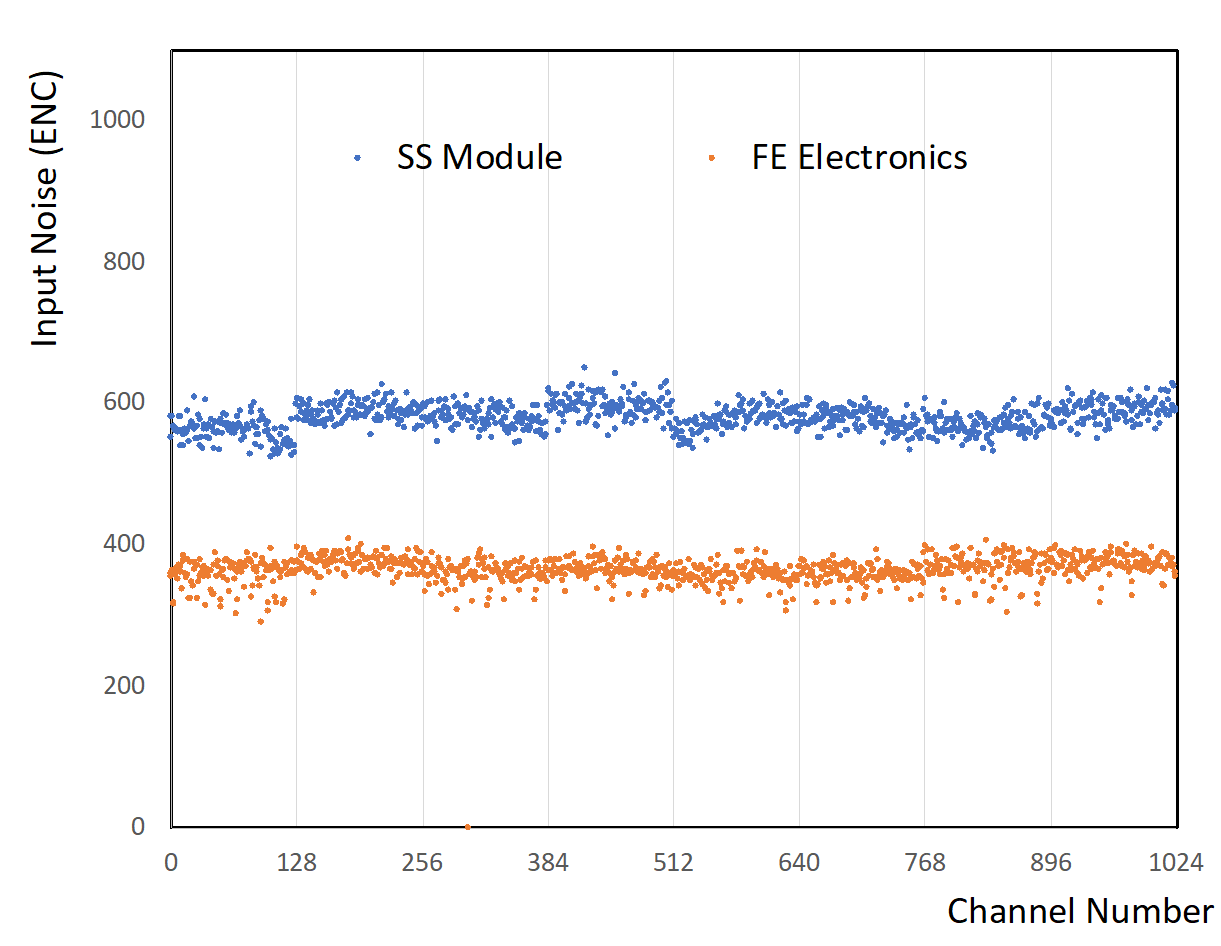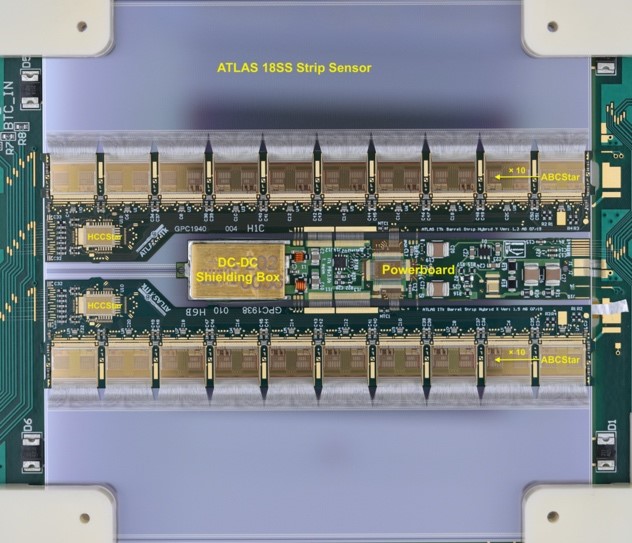ATLAS Prototype Silicon Strip Detector Modules Delivered
The Institute of High Energy Physics (IHEP) and Tsinghua University have recently completed two prototype silicon strip detector modules for the ATLAS Inner Tracker upgrade project. The electrically tested modules have been delivered to the Rutherford Appleton Laboratory (RAL) in the UK and will be integrated into a stave system for further testing.
To cope with the harsh environment of the High Luminosity Large Hadron Collider (HL-LHC) at CERN, ATLAS is constructing a full silicon tracker (Inner Tracker, ITk) using state-of-the-art silicon detector technologies and readout electronics. IHEP and Tsinghua have committed to delivering in total 1,000 silicon strip detector modules for the outer tracker layers (ITk-Strip), which cover 10 m2 and account for about 10% of the ITk-Strip barrel modules.
A short strip (SS) detector module consists of a short strip sensor, ABCStar front-end readout chips located on two hybrids and a powerboard. An ATLAS silicon short strip sensor, with a dimension of 9.76*9.80 cm2 and strip pitch of 75.5 mm, is divided into over 5,000 short strips. An ABCStar chip supports 256 channels with binary readout. Readout chips and microstrip sensors are bonded with 25 mm thin aluminum wires arranged in four layers. Modules are positioned with well-designed jigs to achieve the required mechanical precision. Electrical tests have shown that the noise level of the module before and after wire-bonding meets design expectations and the fraction of good channels after wire-bonding exceeds 99.5%.

IHEP and Tsinghua University have actively participated in this international collaboration. The team has made important contributions to the design and verification of digital blocks of the radiation hard ABCStar readout chip. Team members have collaborated closely with RAL colleagues to define the quality control procedure for the module assembly and have characterized several prototype silicon strip modules at the test beam facility at DESY in Germany. In the meantime, the team is preparing for the upcoming site qualification followed by pre-production, which will run till the end of this year. The team will continue with mass production and will participate in detector integration, installation, commissioning and operation at CERN.
This project has been funded by MOST, NSFC and the State Key Laboratory of Particle Detection and Electronics.

Contact Information
Mr. GUO Lijun
ljguo@ihep.ac.cn